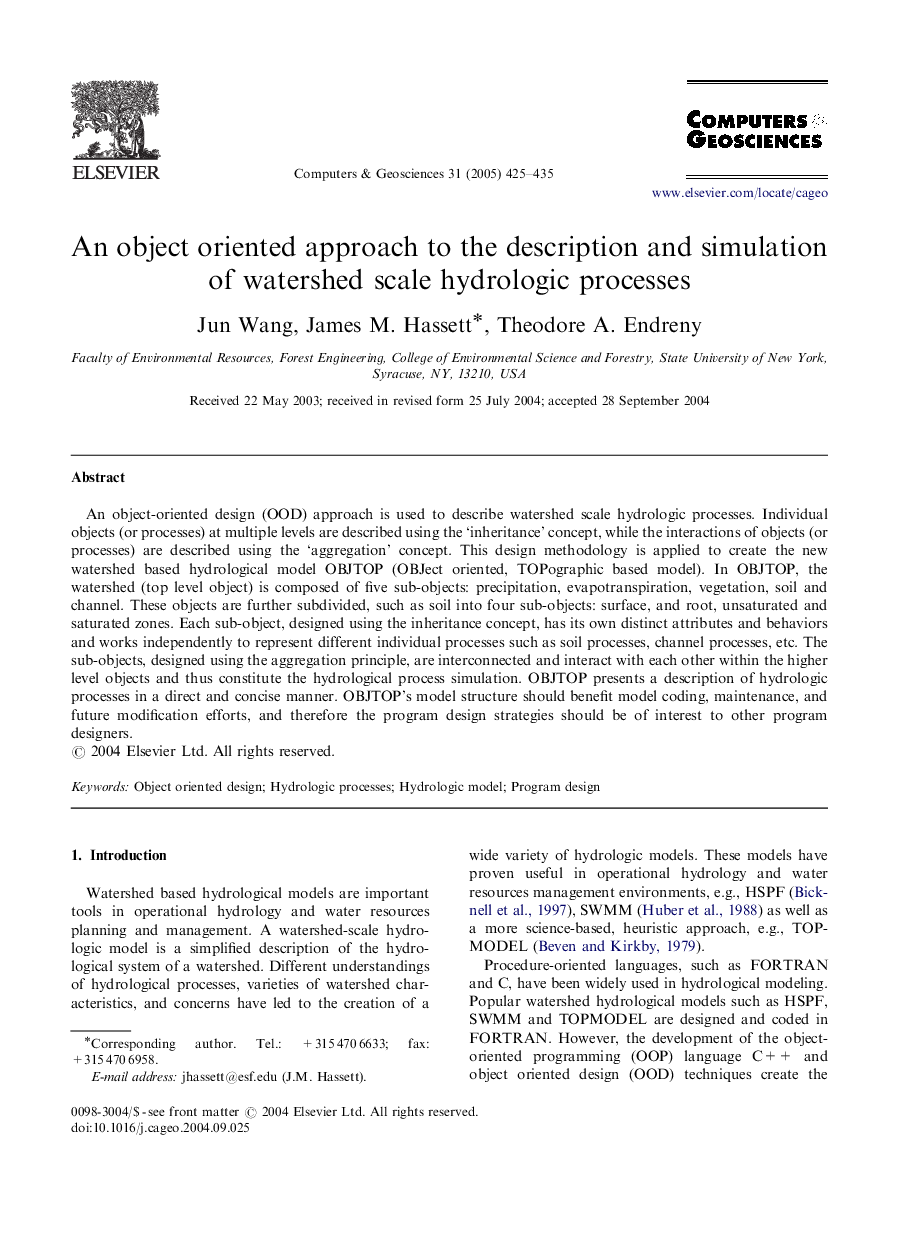| Article ID | Journal | Published Year | Pages | File Type |
|---|---|---|---|---|
| 10352602 | Computers & Geosciences | 2005 | 11 Pages |
Abstract
An object-oriented design (OOD) approach is used to describe watershed scale hydrologic processes. Individual objects (or processes) at multiple levels are described using the 'inheritance' concept, while the interactions of objects (or processes) are described using the 'aggregation' concept. This design methodology is applied to create the new watershed based hydrological model OBJTOP (OBJect oriented, TOPographic based model). In OBJTOP, the watershed (top level object) is composed of five sub-objects: precipitation, evapotranspiration, vegetation, soil and channel. These objects are further subdivided, such as soil into four sub-objects: surface, and root, unsaturated and saturated zones. Each sub-object, designed using the inheritance concept, has its own distinct attributes and behaviors and works independently to represent different individual processes such as soil processes, channel processes, etc. The sub-objects, designed using the aggregation principle, are interconnected and interact with each other within the higher level objects and thus constitute the hydrological process simulation. OBJTOP presents a description of hydrologic processes in a direct and concise manner. OBJTOP's model structure should benefit model coding, maintenance, and future modification efforts, and therefore the program design strategies should be of interest to other program designers.
Related Topics
Physical Sciences and Engineering
Computer Science
Computer Science Applications
Authors
Jun Wang, James M. Hassett, Theodore A. Endreny,
